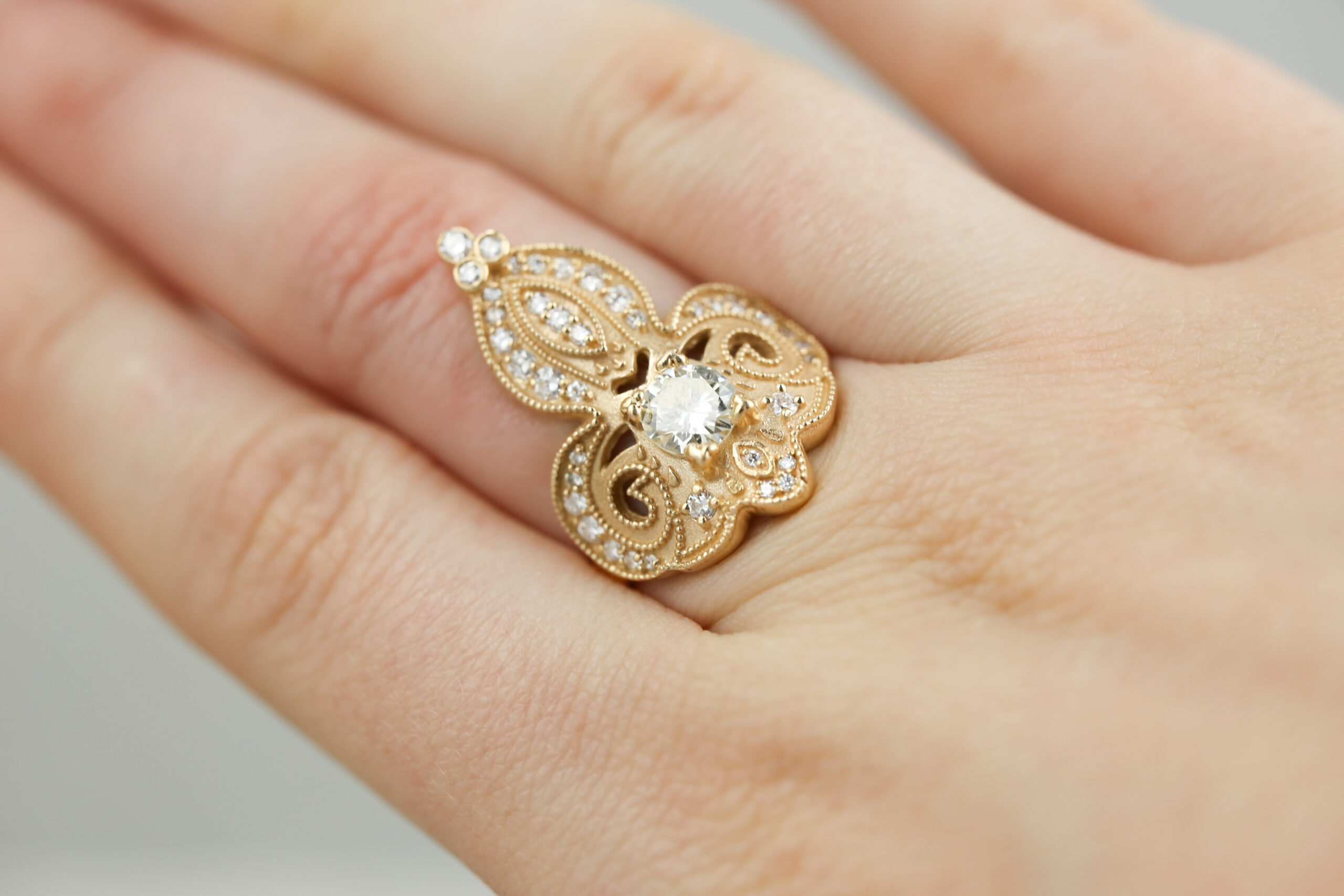I stand by this statement: Professionals in the jewelry industry need to understand laboratory-grown diamonds.
Whether they sell them or not.
But where is the accurate information? Most online resources are perpetuating the dissemination of misinformation to achieve sales, whether it’s for the benefit of the mined or lab-grown industry.
A couple of years ago, the FTC made an issue out of lab-grown diamond dealers not being clear in their advertising when calling their product “sustainable” (sometimes omitting the term lab-grown in some of their advertising), which the FTC at the time considered an “unsubstantiated claim.” We’re seeing a discrepancy in information between the two “sides” of mined vs. lab-grown, and most companies can’t answer their customers’ questions without a thick layer of bias.
Many sellers, some even at the retail level, are claiming lab-grown diamonds are “sustainable” among other things without having a clear idea of where lab-grown diamonds even come from.
Meanwhile, natural diamond sellers are often confronted with half-informed customers while sometimes unequipped with the knowledge to respond in an educated manner.
So how are lab-grown diamonds really made?
What should they be called? How should they be sold?
And more importantly.
How should they be valued?
And how are they identified?
All of these questions and more are answered in The Gem Academy’s educational courses on Lab-Grown Diamonds including The Ultimate Online Course on Laboratory-grown Diamonds and Retailer’s Guide to Laboratory-grown Diamonds.
Regardless of what sellers, media outlets, and YouTube say…There is a truth when it comes to laboratory-grown diamonds, and it’s not as simple as we’d all like it to be. The best way to refrain from generalizing what is a very broad concept is to be educated well enough to answer specific questions about the subject.
Customers every day are being fed misinformation regarding both natural and laboratory-grown diamonds, and in the case of lab-grown diamonds, this misinformation is seeping into the trade as well. We can’t stop YouTubers and bloggers from perpetuating myths about our industry, but we can better equip industry professionals and especially our employees to educate our customers.
Lab-grown diamonds are not made in a microwave.
Lab-grown diamonds are not indistinguishable from natural diamonds.
Lab-grown diamonds are not too “new” for the secondhand market…
… This is why if you are in the business of buying diamonds off the street, you must know how to determine if they’re natural or synthetic.
And what about HPHT diamonds that test as synthetic moissanite?
Yeah, that’s a thing.
Our industry is facing a new landscape of obstacles in diamond buying and selling, client education, and social media, marketing, and branding.
If you own a retail store or a pawn shop, I strongly advise investing in The Gem Academy’s courses for your staff.
For more information, check out our newest podcast interview with Julia Griffith of The Gem Academy about lab-grown diamond misinformation and how to better educate the trade.
And don’t forget to sign up for The Ultimate Online Course on Laboratory-grown Diamonds or Retailer’s Guide to Laboratory-grown Diamonds for retail professionals.
Here are some helpful blog posts written by Julia Griffith of The Gem Academy which you might also enjoy:
HPHT laboratory-grown diamonds that test as “synthetic moissanite”
How much cheaper are laboratory-grown diamonds compared to natural diamonds?
How to tell if a diamond is natural or laboratory-grown (just by looking at it!)
Laboratory-grown diamonds 101: An introductory guide to what, why and “how much?”

